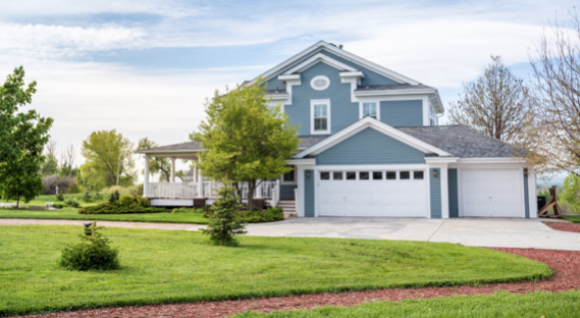Five Small Trees That Are Perfect for Your Front Lawn
 Ornamental trees are the type of trees used as part of a garden, front lawn or landscape setting because they possess aesthetic characteristics such as flowers. These trees are crucial for obtaining the perfect front lawn that will attract outsiders who would be eager to have a feel of its beauty. They are needed in setting the landscape, as well as impacting extreme quality to the lawn space.
Ornamental trees are the type of trees used as part of a garden, front lawn or landscape setting because they possess aesthetic characteristics such as flowers. These trees are crucial for obtaining the perfect front lawn that will attract outsiders who would be eager to have a feel of its beauty. They are needed in setting the landscape, as well as impacting extreme quality to the lawn space.
It is important to make extensive findings when choosing the trees for the lawn space. Imperatively, discover the peak height of the tree and the amount of time it will take to reach that height. If this process is neglected, the possibility of planting a tree that will eventually destroy the foundations of your building, hinder light and dwarf your lawn space will seem somewhat inevitable. Although, these kinds of trees may initially fit right into your lawn space due to their rapid growth.
Furthermore, there are plenty of ornamental tree species with a compact habit that won’t outgrow the lawn space. A felicitous and effectively positioned tree will make a beautiful focal point that will provide the required attraction all through the year. If especially you line in the United Kingdom, you will find these ornamental trees perfect for your front lawn:
1. Amelanchier lamarchkii Plant
The Amelanchier lamarchkii, which is also called juneberry, is a large deciduous ornamental tree in the family Rosaceae. This small tree originates from Europe, where it is called snowy mespilus. This ornamental tree has white star-shaped flowers. Its young berry-like pome fruits are quite edible; they are dark red when young, but turn dark purple when ripe. The Amelanchier plant rarely exceeds 5-meters in height; hence, it is a good choice for a small garden or front lawn. They grow into different shapes depending on their variety: Some develop into large globular shrubs while the others develop into small trees. These ornamental trees love growing on clay in an open position. They do not flourish in soil that contains lime. The pruning of the canopy of this tree should be done between November and late February when the shape of the branches is quite visible. It does not live longer than 50 years.
2. Rhododendron Plant
This small tree is a woody plant in the family Ericaceae. The Rhododendron is a genus of 1,024 species that are either deciduous or evergreen in nature. It is widely spread in North-America but found mainly in Asia. They usually have bell-shaped flowers. It is important to know that the species of Rhododendron that are planted in lawns are those that grow to a height of about 1 – 3 feet and they are called the dwarf Rhododendron. Usually, the dwarf Rhododendron grows to a height of about 0.5 inches each year until reaching full height in 6 years. They are shallow-rooted and as such can only survive in a wide, shallow pan. They thrive in moist, well-drained soils high in organic matter. It is highly remarkable that the flowers are in various colors such as: Pink, red, white, yellow, and purple. Most Rhododendron flowers bloom in the spring, but there are also summer-blooming varieties that will add charm to your front lawn.
3. Magnolia Trees
The Magnolia trees are a genus of about 210 plant species of the family Magnoliaceae. They are flowering plants that originate from North America or Southeast Asia but have spread to all other continents. The flowers of the Magnolia tree are usually in singles and are saucer-shaped. These showy and fragrant flowers are in varieties of colors such as: yellow, pink, white, pink and green. The Magnolia grows to a height of about 10 – 70 feet high depending on the size and species of the Magnolia. It takes a range of 10 – 30 years for them to mature into their required heights; although, the environmental conditions have a great influence on the growth of this plant. The flowering of the Magnolia tree takes 10 years to attain maturity and most species are known to bloom in spring. The Magnolia tree thrives when it is grown in an acidic soil that is rich in nutrients. The young tree should be pruned in middle to late spring when it is needed. They are a good fit for your front lawn because of their unique coloration and the safety it proffers to your home structure.
4. Flowering Hawthorn Trees
Hawthorn trees, also known as Crataegus, is a genus of several hundred species of trees and scrubs, of the family Rosaceae. The common Hawthorn tree is native to Northern Europe. They are characterized by thorny branches and berry-like pome fruit. The trees bear clusters of white flowers that bloom in spring. They are usually attractive deciduous ornamental trees that can fit into any front lawn. The maximum height of the Hawthorn trees is about 16 – 49 feet tall. They mature to a height of about 12 – 25 inches yearly; this growth rate is still dependent on the growing conditions and species of the hawthorn tree. They can grow in any soil type, but they thrive in a well-drained soil that contains a high content of organic matter. Hawthorns are grown in containers before they are transferred to the front lawn or garden. The pruning of this ornamental tree is usually done in the winter period, only after the plant has grown to a height of about 4 – 6 feet.
5. Escallonia laevis Plant
The Escallonia laevis, which is also called the Pink Elle, is an evergreen small tree that is native to North and South America. The pink Elle is a genus of about 40 species of the family Escalloniaceae. It is a hermaphrodite. It produces a golden yellow growth with a central splash of green. The clustered, tabulated honey-scented flowers are usually pink during summer. The maximum height of this ornamental plant is at about 100 cm. They grow for about 30 cm every year and require the range of 10 – 30 years to mature. They also have a relatively long lifespan of between 20 – 50 years. The Pink Elle is suitable for coastal areas and can thrive in any well-drained soil type. They also bloom bountifully in a sunny area. This ornamental plant is usually pruned during summer after the blooming season has ended in order to reshape it. This ornamental plant is an enchanting figure that will be great for your front lawn.
Tweet








































